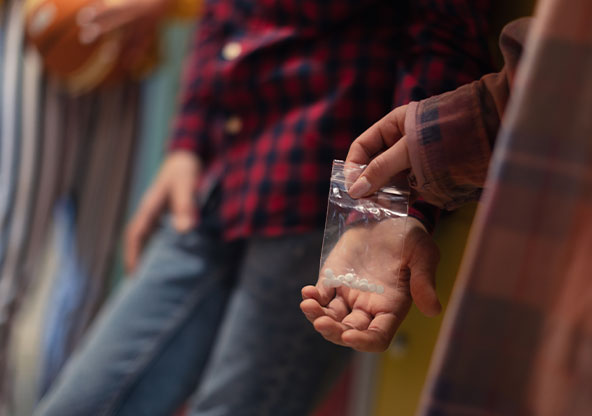What Parents of Teens Need to Know About Drug and Alcohol Abuse
By Ruchi Kaushik, MD, MPH, FAAP

Today’s youth face a completely different landscape of peer pressure and drug groups from what we remember as children. Gone are the days of the television ads using eggs in a frying pan as an analogy for our brains on drugs.
In fact, gone are the days of watching ads on TV! Our public service announcements will need to move from the family room to social media platforms, such as this blog itself.
Our children face not only pressures to partake in underage drinking, but also new tobacco delivery devices, a world that is incrementally legalizing marijuana, and prescription pain medications that may serve as a gateway to illicit opioids.
The following tips will catch you up to speed on what your kids are up against.
Alcohol
That drinking under the age of 21 is illegal is common knowledge. Further, it is illegal to supply alcohol to your child’s minor friends in your home. When you talk to your kids about the dangers of alcohol, be sure to engage in a conversation about binge drinking.
- Binge drinking is a pattern of drinking that brings the blood alcohol concentration to the legal limit (0.08 g%).
- This typically happens when men consume five or more drinks or women consume four or more drinks in approximately two hours.
- Binge drinking is most common among young adults.
- Most people under age 21 who drink report binge drinking.
- Binge drinking is associated with many health problems including:
- unintentional injuries (eg. car crashes),
- violence (eg. homicide, suicide, intimate partner violence, sexual assault),
- sexually transmitted infections and unintended pregnancies,
- chronic problems (eg. high blood pressure, liver disease, stroke, heart disease), and
- cancer.
E-cigarettes, Vaping, and JUULing
E-cigarettes are electronic devices used to heat a liquid and produce an aerosol that can be inhaled. They can look like cigarettes, cigars, or pipes, or they can be found in shapes more attractive to teens such as USB flash drives, pens, or even lipstick containers.
- Most e-cigarettes contain nicotine, but they can also deliver marijuana.
- Nicotine can harm the developing adolescent brain, and the brain continues to develop until the age of 25.
- Using nicotine as a teenager increases the risk of addiction to other drugs.
- We are still learning the long-term health effects of e-cigarettes.
- Children and adults have been poisoned by swallowing, breathing, or absorbing e-cigarette liquid through their skin or eyes.
Pain Medications
It is an all too common story. A teen breaks her leg during a soccer game and is appropriately given opioids for pain management. How does a parent know when to give the pain medication, for how long, and which teen is likely to develop an addiction?
- When taken as prescribed, under the supervision of a physician, and for a short time, opioids are a safe and effective method to control pain.
- Be sure to ask your physician if your teen’s prescription is a long-acting type of opioid (eg. oxycontin) as they tend to be more addictive.
- Always check in on your teen’s mental health. If you are worried about depression, seek medical assistance.
- Tell your child to never use a friend or family member’s opioid prescription.
- Do not mix opioids with alcohol or other drugs.
- Ask your physician about other coping methods to help relieve pain that do not require the use of medications. Deep breathing, meditation, mindfulness, and yoga are actively being studied as alternatives to medication for pain control, particularly in chronic pain.
- If you suspect your child may be addicted to any drug, including opioids, seek medical help immediately.
For more information, visit www.cdc.gov. To find a pediatrician, visit this page.
